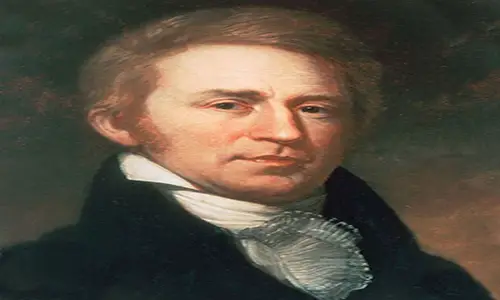
Born on the 1st of August, 1770, in Caroline County, Virginia, William Clark went on to become part of the historical exploration team of Lewis and Clark. It all came about when Meriwether Lewis, a friend and fellow soldier that he met during his service in the U.S. Army back in 1795, invited him to come along and command of an expedition of the lands situated west of the Mississippi River. The entire journey took more than two years, and more than 8,000 miles. Lo and behold, the great expedition enabled mapmakers to understand the geography of the West.
Along his journeys, Clark encountered many Native American tribes, and even befriended a Shoshone Indian woman by the name of Sacagawea. Throughout the expedition he began to learn more about Native American life, as well as the terrain that they laid claim to. Soon, the expert mapmaker was able to depict a vivid image of the lands west of the Mississippi River. William Clark passed away on the 1st of September, 1838, in St. Louis, Missouri. To this day, he is remembered to be one of the best mapmakers and explorers the world has ever known. For more fast facts about the great mapmaker, here are 10 amazing facts about need to know about William Clark:
Fact 1: William Clark was one half of history’s most famous two man expedition team; Lewis and Clark. Together, the men explored the lands located west of the Mississippi River. In the span of two years and a grueling 8,000 miles, the geography of the west started to slowly unfold, a blessing for mapmakers everywhere.
Fact 2: It seems that greatness runs in the family, because this guy’s older brother was the revolutionary war hero George Rogers Clark! Those are some pretty big shoes to fill, but considering that the younger Clark was able to help map out majority of the lands West of the Mississippi River, I’d say they’re both of the same caliber.
Fact 3: William Clark had his fair share of rendering military service too. Clark entered the military when he turned 19 years old, and served the militia before serving the U.S. Army. During his time with the troops he befriended Meriwether Lewis, and the pair served two served alongside each other back in 1795.
Fact 4: Clark had to resign from his post at the Army because no one was around to take charge of his family’s estate and manage the fortune.
Fact 5: Aside from being a man equipped with the skills of a soldier and a great knowledge of the outdoors, William Clark was also a pretty darn good mapmaker. He led the expedition towards the right routes, and kept the team going.
Fact 6: It was near a Mandan village that they happened to come across Shoshone Indian and her husband, a French-Canadian trader. Together, they joined the expedition.
Fact 7: Sacagawea, the Shoshone Indian, actually gave birth to a baby boy during the 8,000 mile journey! The child was named Jean Baptiste. William Clark, quite fond of the newest addition, gave him the nickname “Little Pomp” or “Pomp”.
Fact 8: Throughout the entire expedition, Clark and company had discovered over 173 new species of plants, as well as 122 species and subspecies of animals!
Fact 9: William Clark wed Julia Hancock, and together they had five children. His first son he named Meriwether Lewis Clark.
Fact 10: In the year 1813, Clark became the governor of Missouri Territory, as well as the Superintendent of Indian Affairs. His compassion and fair treatment for the Native Americans is widely known.








Leave a Reply